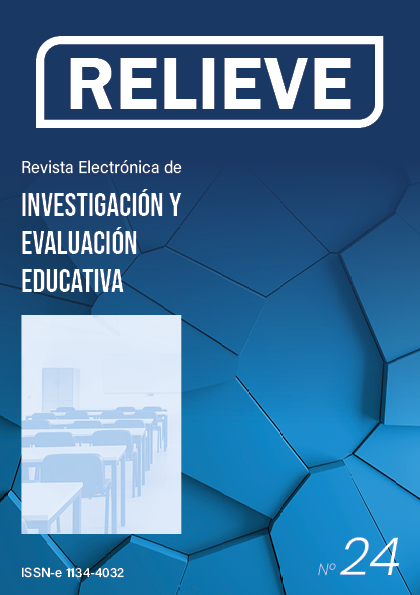A Longitudinal Look: Is “Docentia” an useful instrument for university teacher’s evaluation?
DOI:
https://doi.org/10.7203/relieve.24.2.12142Keywords:
Docentia, Performance evaluation in higher education, university teaching, university teacher, student satisfaction in higher educationAbstract
Docentia is an evaluation model proposed by ANECA (National Agency for Quality Evaluation) and used by Spanish universities to evaluate teaching quality. One of the detected problems is the low capacity to discriminate between the possible categories of teachers, showing a bias toward the highest score (Excellent). This affects negatively the prestige of the model: if most teachers are labelled “excellent”, those teachers who really foreground above the set would not be detected. Thus, the capacity to orientate teachers to improve their performance will be minored. This study explores the discrimination capacity of the model based on the experience at the University of La Laguna (Docentia-ULL). We simulate results of the evaluation changing the model in two ways. On one hand, changing weights of some dimensions and sub dimensions, as well as maximums of some criteria, in order to increase the value of the commitment of teachers with training and educational innovation, opposite to the mere fulfilment of teaching obligations. On the other hand, increasing the required minimum for student’s satisfaction and academic supervisor’s satisfaction to become necessary requirement to obtain positive, very positive or excellent evaluation. Our results show that reducing the weight of teaching obligations and increasing the weight of training and innovation produce a more centered distribution. Most teachers were situated in the middle categories. We also compared the real results obtained after the implementation of the chosen alternative simulated model. We discuss the implications of those improvements on the evaluation of teaching quality and on the performance of Spanish university teachers.
Downloads
Downloads
Published
How to Cite
Issue
Section
License
The authors grant non-exclusive rights of exploitation of works published to RELIEVE and consent to be distributed under the Creative Commons Attribution-Noncommercial Use 4.0 International License (CC-BY-NC 4.0), which allows third parties to use the published material whenever the authorship of the work and the source of publication is mentioned, and it is used for non-commercial purposes.
The authors can reach other additional and independent contractual agreements, for the non-exclusive distribution of the version of the work published in this journal (for example, by including it in an institutional repository or publishing it in a book), as long as it is clearly stated that the Original source of publication is this magazine.
Authors are encouraged to disseminate their work after it has been published, through the internet (for example, in institutional archives online or on its website) which can generate interesting exchanges and increase work appointments.
The fact of sending your paper to RELIEVE implies that you accept these conditions.


















